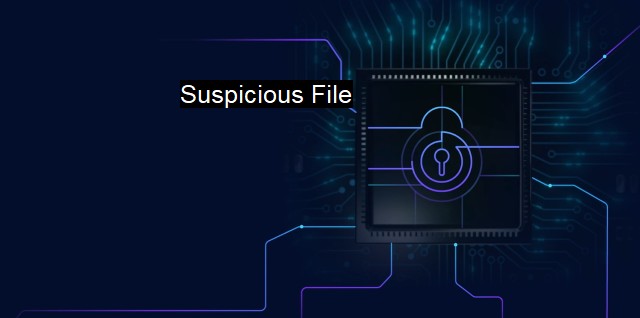What is Suspicious File?
Unraveling the Threat of Suspicious Files in Cybersecurity: How Malware Infiltrates Computer Systems and What You Need to Know to Stay Safe
A suspicious file in the context of cybersecurity and antivirus refers to a data carrier whose content, behavior, origin or other characteristics raise concerns about it being potentially harmful to your computer system. These files are usually detected by security systems like antivirus programs that employ various methods of detection including signature-based, behavior-based, integrity-based and many others, to identify and delete threats before they can cause harm.Just like a suspicious person in real life who would usually be subjected to further investigation, a suspicious file is generally examined more carefully by security measures. In a computer system or network, this examination process could involve deep inspections of the file’s structure, code, and behavior. This comes in handy with obfuscated threats—sophisticated forms of malware that hide their malicious intent behind benign appearance.
Suspicious files are not always malicious, they could sometimes be false positives resulting from legitimate files behaving unexpectedly due to bugs or design flaws. Similarly, certain harmless files from lesser known publishers might trigger security warnings because the software lacks an established reputation. in an environment where new malware threats are unleashed every day, it's typically wise to err on the side of caution by performing thorough checks or completely avoiding such suspicious files.
In the cybersecurity landscape, suspicious files majorly fall into four categories: executable files, macro viruses, hidden files, and

Suspicious File FAQs
What is a suspicious file in cybersecurity?
A suspicious file in cybersecurity is a file that appears to be malicious or harmful, and is therefore identified as a potential threat by antivirus software.How can I identify a suspicious file on my computer?
One way to identify suspicious files on your computer is to look for files that have unusual names, extensions, or locations. You can also scan files with antivirus software to check for any signs of malware or other security risks.What should I do if I find a suspicious file on my computer?
If you find a suspicious file on your computer, do not open it or interact with it in any way. Instead, run a full scan with your antivirus software to remove any detected threats. You can also report the file to your IT department or cybersecurity team for further analysis.Can antivirus software always detect suspicious files?
While antivirus software is designed to detect and remove suspicious files, it is not always 100% accurate. Some types of malware can evade detection, or may be disguised as legitimate files to avoid detection. Therefore, it is important to stay vigilant and take other security measures, such as avoiding suspicious downloads and keeping your operating system and software up to date.| | A | | | B | | | C | | | D | | | E | | | F | | | G | | | H | | | I | | | J | | | K | | | L | | | M | |
| | N | | | O | | | P | | | Q | | | R | | | S | | | T | | | U | | | V | | | W | | | X | | | Y | | | Z | |
| | 1 | | | 2 | | | 3 | | | 4 | | | 7 | | | 8 | | |||||||